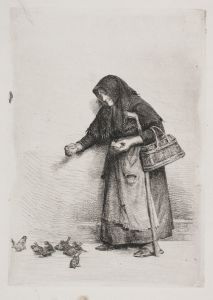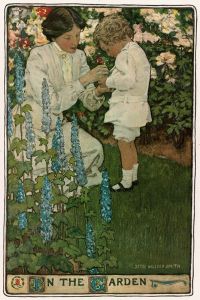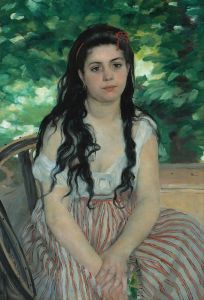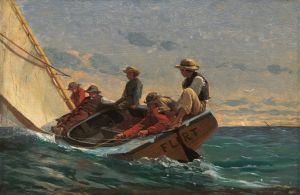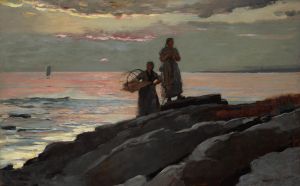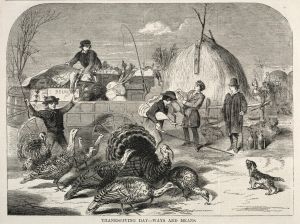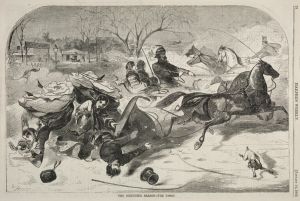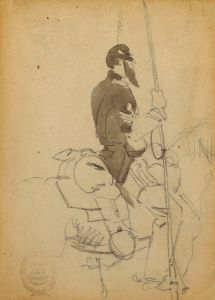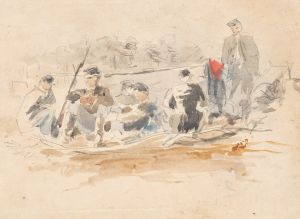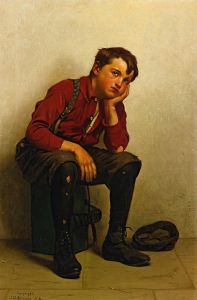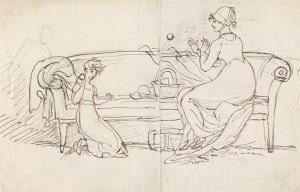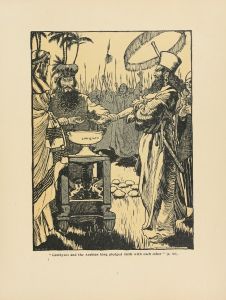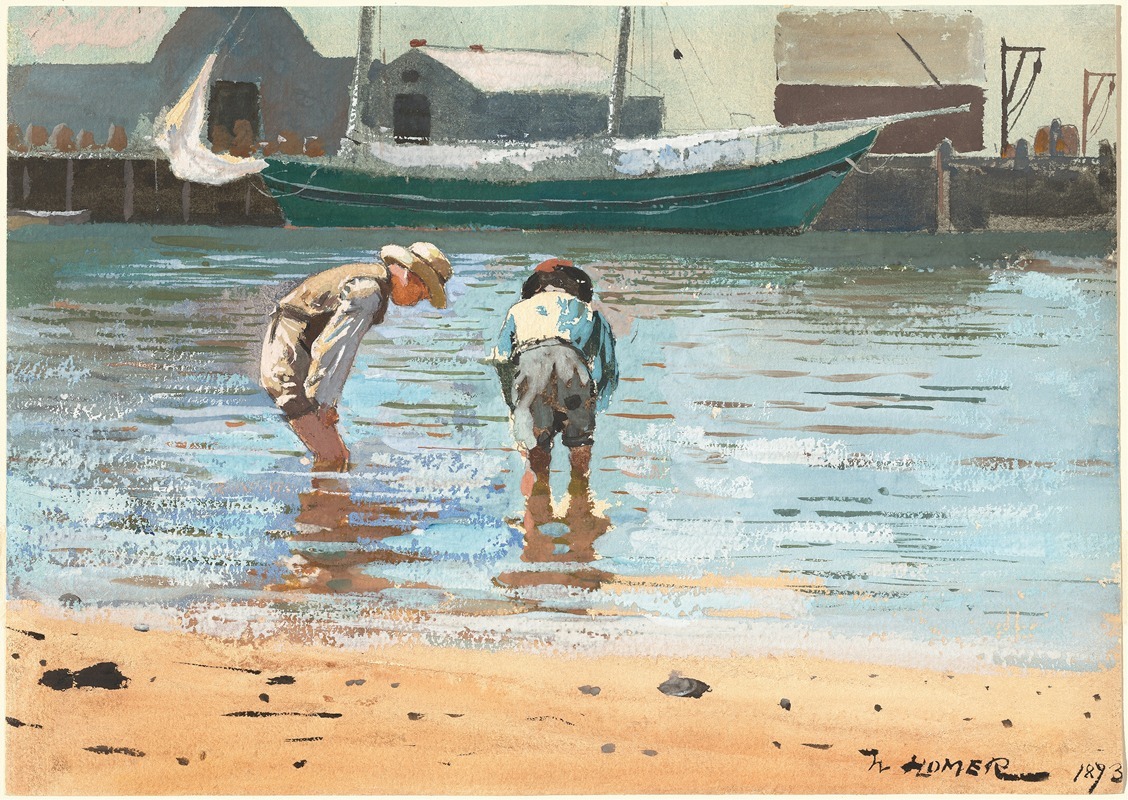
Boys Wading
A hand-painted replica of Winslow Homer’s masterpiece Boys Wading, meticulously crafted by professional artists to capture the true essence of the original. Each piece is created with museum-quality canvas and rare mineral pigments, carefully painted by experienced artists with delicate brushstrokes and rich, layered colors to perfectly recreate the texture of the original artwork. Unlike machine-printed reproductions, this hand-painted version brings the painting to life, infused with the artist’s emotions and skill in every stroke. Whether for personal collection or home decoration, it instantly elevates the artistic atmosphere of any space.
Winslow Homer’s painting Boys Wading is a work created by the renowned American artist, who is widely celebrated for his depictions of American life and landscapes in the 19th century. This painting, completed in 1873, is an example of Homer’s early work in watercolor, a medium he increasingly explored during this period of his career.
The artwork portrays a group of boys wading in shallow water, capturing a moment of leisure and innocence. Homer’s focus on everyday scenes of rural and coastal life was a hallmark of his artistic style, and Boys Wading reflects his ability to convey the simplicity and vitality of childhood. The painting is characterized by its loose, fluid brushstrokes and the luminous quality of the watercolor medium, which Homer used to depict the interplay of light and water.
Boys Wading was created during a time when Homer was spending summers in Gloucester, Massachusetts, a coastal town that provided inspiration for many of his works. His time in Gloucester marked a significant phase in his artistic development, as he began to experiment more extensively with watercolors, a departure from his earlier oil paintings. This period also coincided with a growing interest in capturing the natural environment and the lives of ordinary people, themes that would define much of his later work.
The painting is part of Homer’s broader exploration of youth and nature, recurring themes in his oeuvre. By focusing on children engaged in outdoor activities, Homer highlighted the connection between humans and the natural world, a subject that resonated with the cultural and artistic movements of his time. The spontaneity and unposed quality of the scene suggest Homer’s keen observational skills and his ability to translate everyday moments into compelling works of art.
Today, Boys Wading is recognized as an important example of Homer’s early watercolor technique and his contribution to American art. The painting is held in the collection of the Art Institute of Chicago, where it continues to be appreciated for its technical mastery and its evocative portrayal of childhood.





